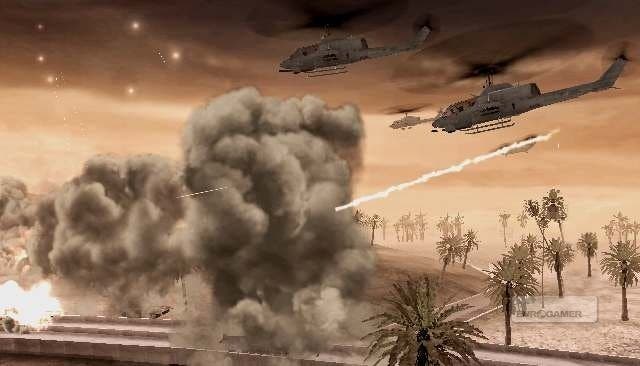Call of Duty: Modern Warfare - Reflex Edition
Modern Wiifare.
With large chunks of the gaming world busy getting in a right old lather over Modern Warfare 2, the belated appearance of a Wii port of the 2007 original the other day had all the impact of a Johnstone's Paint Trophy scoreline on a wet Wednesday night.
And just like the Swindon vs. Norwich match this week, it has nil-nil written all over it, with Activision hoping for the best by fielding its Treyarch reserve team. The bold intention was to release a fully-featured conversion, complete with all the levels and multiplayer features that have turned the PC, PS3 and Xbox 360 game into a 13-million selling blockbuster over the past two years.
Sadly the result is only ever passable. While all of the basic gameplay elements that won the game such wide acclaim are retained, much of its visual appeal is reduced dramatically thanks to muddy visuals which don't even come close to reaching the standard reached by other Wii titles in the genre. This "Reflex Edition" is a wobbly Telesync compared to the cinematic presentation you'll get elsewhere.
As pointed out by Digital Foundry the other day, the compromises are savage. At first glance, Treyarch does a reasonable PS2-level job of approximating the scripted action, but even Sony's old warhorse was capable of doing a better job than this in its pomp. On a basic level, frame-rate is halved to 30FPS - and it often struggles to even maintain that consistently - but it's in the details where Modern Warfare suffers most.
While you might expect shadowing and lighting to take a hit on the Wii, it's the muddy texturing, jagged geometry and facial detail that are especially disappointing. On standard-definition TVs this might not be that much of a problem, but anyone playing this on an HD set may find certain scenes less palatable. The overall effect isn't completely ruinous, but it's important to stress this is by no means the best possible port the system could accommodate judging by the quality of games like Metroid Prime and The Conduit. The devs here face different technical challenges, perhaps, but that's not the gamer's fault.

In terms of the gameplay there are fewer complaints, at least, and the experience is still highly enjoyable once you adapt to the peculiar nuances of motion control. For your money (and at £39.99 you're paying a premium) you still get the same six-hour, three-act single-player campaign that you'd expect, and it all plays out identically throughout.
Taking place in an unspecified near future, you control one of six characters across an interwoven story which focuses on the trials of the British 22nd Super Army Soldiers Regiment and the United States Marine Corps 1st Force Recon, as they chase down Imran Zakhaev, a Russian Ultranationalist. Like any good villain of the piece, he eventually resorts to attempting nuclear war to prove his point, so it's up to you and your ability to point a gun to stop the madness.
Because this is a Wii game, pointing said gun involves choosing between various Wiimote and nunchuk configurations before proceedings get under way. As well as the now-obligatory Wii Zapper support, there are six button layouts to choose from, in addition to six control presets.

Pitched from 'Greenhorn' right up to 'Insane' level, the idea is presumably to provide varying levels of sensitivity to suit the precise control requirements of all types of players. At the novice end of the spectrum, you get presets for slow, stable camera control and control-stick aiming for scoped and turret weapons, while at the other end you get faster, tighter settings and precision aiming for all weapons - and everything in between.
If you're still not happy with that, then there's probably medication available. You can drive yourself into uncharted realms of OCD by tweaking all manner of sliders, including the camera speed, the pointer sensitivity, the dead zone, ADS tracking and whether to turn gesture control on or off, but the chances are you'll be as reliant on the frame-rate as much as anything.


